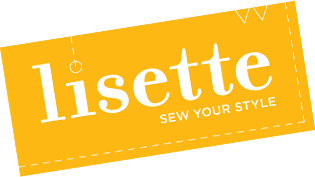One of the most frequent questions we hear regarding the Lisette patterns is about sizing. I know that sewing pattern sizes can be really confusing, especially since patterns made by the major pattern companies don’t correspond to any clothing sizes you buy in the store.
I’ve talked about pattern sizing before, but today I want to talk to you about how it relates specifically to the Lisette patterns and to all the other big pattern manufacturers. Do you want to know why pattern sizes don’t correlate to ready-to-wear sizes? Today I’ll give you a quick history, and then I’ll help you to estimate your size.
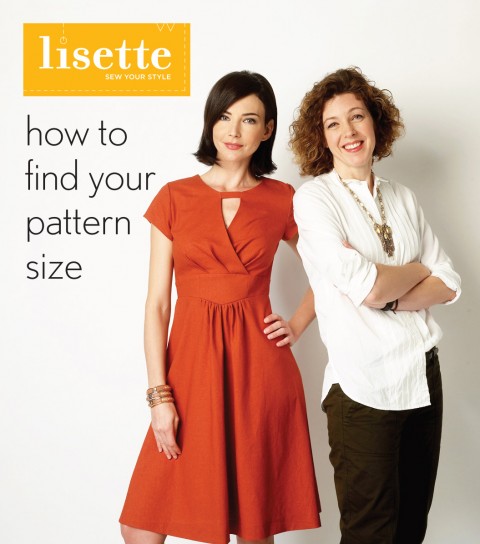
Once upon a time, pattern sizes and ready-to-wear dress sizes were based on bust measurement, and women’s sizes were all more or less uniform. But there’s never really been a standard for women’s sizes, and every manufacturer determines their own sizing. Over time, many clothing manufacturers decided to flatter their customers by offering smaller size numbers. The clothing stayed the same sizes, but the size numbers kept getting smaller so women could feel good about wearing a smaller size. This is usually referred to as “vanity sizing,” and over the past 40 years apparel sizes have gradually strayed further and further from where they started.
In the apparel business, each seasonal delivery is its own entity, so if a manufacturer wants to change sizes it’s not a big deal. Women can try on the clothes to determine their correct size relatively easily. But in the sewing pattern business, many patterns stay in print much longer. And you can’t really try on before you buy. So big sewing pattern manufacturers haven’t changed their sizes over time. They’ve done this to make it easier for their customers; consistency is less frustrating than constantly changing sizes to reflect the varying size number of the apparel industry.
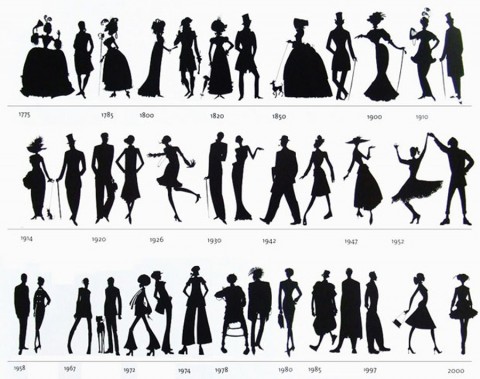 photo credit
photo credit
Wouldn’t it be nice if there was some sort of standard for all apparel, both ready-to-wear and sewing patterns? I don’t think it will ever happen, mostly because different clothing manufacturers design for different ages and body types. But it would certainly make things easier for the customer.
In any case, the good news about sewing patterns is that, for the most part, once you find your size you’ll be able to stick with it. You’ll wear the same size for most of the big pattern manufacturers. However, you’ll still want to make a muslin to check the fit and confirm the size. Different designs will include varying amounts of design ease (follow that link to read much more on this topic), so you may move up or down a size now and then.
OK? Does that make sense?
Now, to find your dress, blouse, or jacket size, you’ll want to focus mostly on your shoulders and upper chest. This is where fit is most critical. Anything below your shoulders can be adjusted to fit: bust, waist, hips, etc. That’s the beauty of sewing for yourself; you can customize to your own body. But the shoulders are crucial to getting a good fit, and when you fiddle with them you start getting into sleeve and armhole territory. These areas are generally more challenging to adjust, so we try to get started with the right fit in these areas and then everything else will be much easier.
So, to find your pattern size you’ll want to take two measurements: your upper bust and your full bust. Butterick has a straightforward guide to help you find your size, but I’m going to describe it in a little more detail to help it all make sense.
Your full bust measurement is just that: the fullest part of your bust. Don’t pull too tightly, and make sure to keep the measuring tape horizontal. Write this number down, because you’re going to need it.
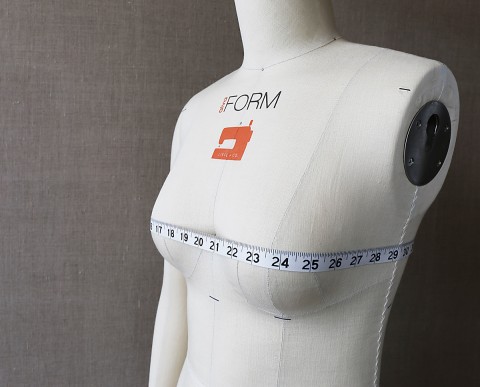 full bust
full bust
Next, take your high bust measurement. You’ll take this measurement directly under your arms, across the top of your chest and across your upper back, again keeping the measuring tape horizontal. Write this measurement down also.
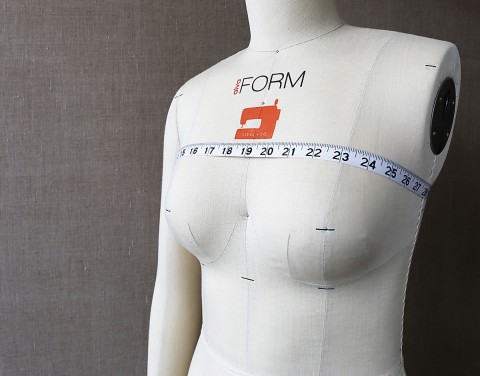 high bust
high bust
Now we’re going to do some quick and easy math.

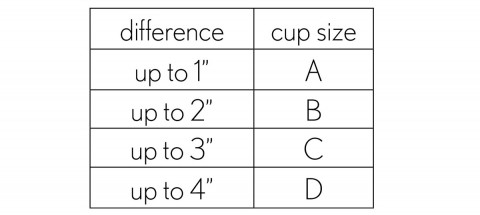
Now you know your cup size (at least as it applies to sewing patterns), but the answer to this simple math problem will also help you to determine what size you wear.
If you are an A or B cup, use your full bust measurement to determine your size on the appropriate Butterick size chart. If you are a C or D cup, use your high bust measurement to determine your size. In other words, if you’re a C or D cup, instead of comparing your full bust measurement to the bust measurements on the Butterick size chart, you’ll use your high bust measurement and compare it to the bust measurement. And then, in order to get a good fit, you’ll probably want to do a full bust adjustment (FBA) to the pattern to give you more room through the full bust. But your pattern will already fit much better through the upper bust and shoulders, which we’ve already said is the crucial part.
Now, let’s just double-check ourselves, shall we? In general, I’ve found that most women’s pattern sizes are approximately two dress sizes larger than their ready-to-wear size. But there’s a lot of variability in that statement. (Remember that we already said that clothing sizes are all over the place these days.) So that statement won’t be as helpful as the bust measurement information we just covered, but you might find it useful to compare the measurement to your usual dress size + 4 (2 sizes) to see if they’re close.
Also, the measurements don’t tell everything! Your body type and build will play a big part in determining your size. When I do fit workshops we look at the measurements, but I also pay attention to each person’s overall body type. If your shoulders are especially narrow, you may need a smaller size than the measurements tell you. If your overall frame is quite full, you may need to go up a size or two. Here is another way to check your size. If you compare all of these methods of determining your size you’ll hopefully get a sense of what your size is. But the best way to check is to make a muslin.
And before I forget, when it comes to pants and skirts, you’ll want to look mostly at the waist or hip measurement to determine your size, depending on the style and the details of the style. I’ll talk a little more about that when we sew the trousers.
Now, I know you’re going to have a lot of questions. And I probably won’t be able to address them all specifically, especially since I can’t see your body–which is the best way to evaluate size. You’ll need to do some work, too, to make a muslin or two. And you may want to invest in this fantastic fit reference book, which is truly invaluable and will help you to make all sorts of fit adjustments. It’s also loaded with useful information. But hopefully this information will get you started and will help to demystify the size question.
Hello, friends! I’m been sewing away in the studio all week, happily and busily preparing for our upcoming Lisette sew-alongs. Are you gathering your materials and getting ready? We’ll start with the moto jacket on Monday.
In the meantime, I thought I’d give you a preview of the fabrics I’ve selected for each of the sew-alongs.
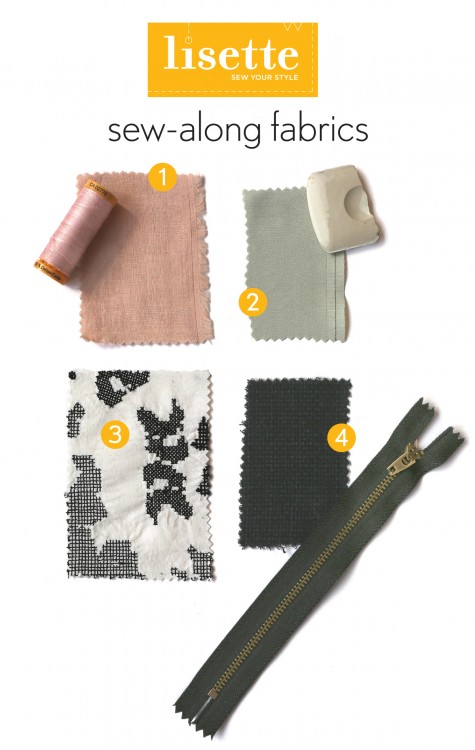
- It’s not on our sew-along list (yet!), but this gorgeous double gauze from Cotton & Steel just arrived, and I’m going to make either the top or the dress from B6182 with it. The peach color was a bit brighter than expected, so I coffee-dyed it and now it’s just perfect. I love sewing with and wearing double gauze, so this will be a lot of fun. I think the fabric is perfect for this style. It will also be really comfortable to wear this summer.
- I wanted something really luxurious and drapey for the B6169 dress, so last week I went to the fashion district to do a little browsing. At Paron I found this celadon-colored 3- (or maybe 4-?) ply washed silk, which is just so crazy-luxurious that I couldn’t resist it. I’ll definitely be painting or dyeing this one, probably before I cut it but maybe after the dress is finished. I haven’t decided for certain, but I can hardly wait to cut and sew this. The fabric was heavily discounted due to a big sale, so I paid less for it than I would have paid for a ready-to-wear dress made of much lesser-quality fabric. Don’t you love it when that happens?
- I found this heavily embroidered cotton in a fabric store just around the corner from our hotel in Madrid last summer. Todd thought I was crazy for buying it (and the salesman thought we were amusing, trying to use Spanish to order in meters), and I really didn’t know what I wanted to do with it at the time. But it worked out beautifully for the B6168 dress. I’m so excited about how it turned out! Initially I was considering dyeing part of the fabric, which could also be really pretty with the black embroidery. I may still do something with indigo; we’ll see.
- For the moto jacket, B6169, I chose this lightweight, somewhat drapey wool with a subtle dobby weave. The colors in this fabric are navy and black, which fits right in with my wardrobe. Both sides of the fabric are pretty, and I chose the textured plaid rather than the more subtle pattern on the opposite side of the fabric. Don’t you love it when your fabric gives you options? It might also have been fun to reverse the sides of the fabric in a few places on the jacket, almost like color blocking but just playing with the texture of the fabric. Here are the two sides of the fabric.
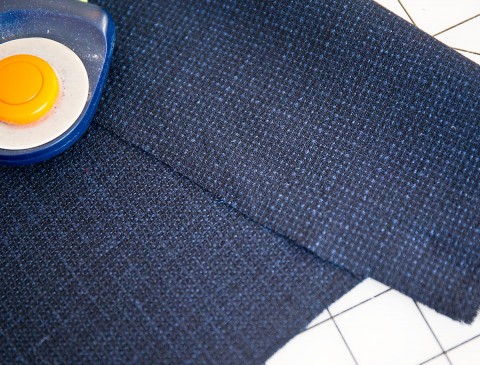
I also have fabric for B6183 cut out and ready to go, so I’ll show you that soon as well.
I hope I’ve given you plenty of inspiration and ideas for your projects! Tomorrow we’ll talk about sizing so you can start cutting out your fabric in preparation for next week.
This is the other half of the pattern we discussed last week, the cropped trousers from B6183. I think I say this about many of our patterns, but this is such a classic, versatile style. We haven’t seen much in the wide-legged trouser department in the past decade or so, which is such a shame because it’s a really flattering style for so many women. Think Katherine Hepburn’s iconic style and it’s always wide-legged trousers. These aren’t quite as wide as Kate’s, but they’ll give you a really nice line and will look good on lots of bodies–not just the lanky angular type.
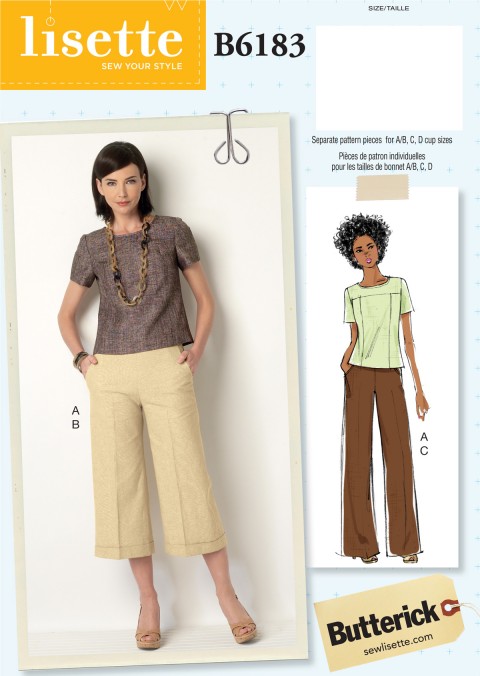
As with most clothes, this style is all about the proportions. When cropped, the hem should be at least a couple of inches above the ankle. You can go shorter with them, too, as you’ll see below.
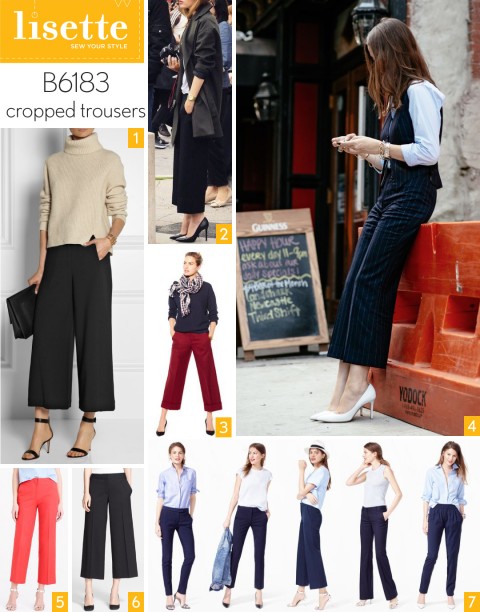
- I love everything about this. The boxy sweater, the strappy heels. Come on, spring!
- They’re cute with black pumps and a long jacket, too!
- Marsala, anyone? I love the Pantone color of the year because it works so well with camel, gray, navy and all my favorite basic colors.
- The pinstriped fabric is such a fun play on the classic power suite.
- For spring, why not a bright coral or red pair of trousers?
- Cropped trousers even work with ballet flats.
- Of all the different pant silhouettes available right now, I think the cropped wide-legged trousers feel the freshest. We haven’t seen them in a long time and they’re such a classic shape.
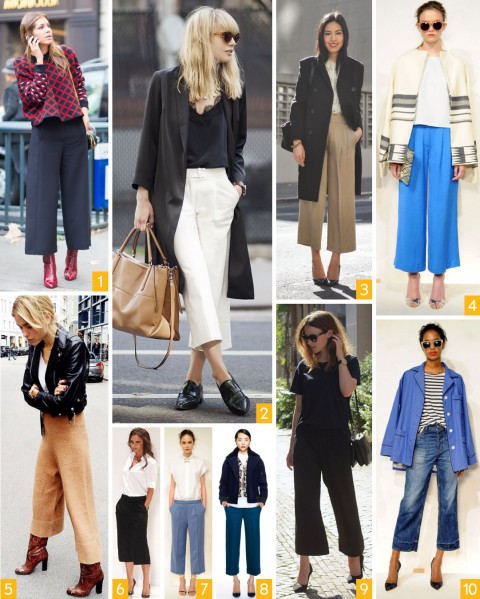
- Worn with a boxy top, this is a great silhouette for a lot of body types because it highlights the waistline.
- Make them in white or cream for spring. In this photo and the next photo, I just adore the long jacket! It really pulls an outfit together. I’m planning to make myself one using our Weekend Getaway Dress pattern, so stay tuned for details if you’d like to make one for yourself!
- I’d call this a completely fresh take on khakis.
- Bright blue looks great with neutrals. (See the last photo in this post for bright blue with brights, too!)
- Aren’t they fun in fuzzy camel? I like them with the boots, too. This would be a great winter look for those of you in the southern hemisphere approaching winter.
- Crop to just a few inches below the knee for more of a skirt look. This would be really great for a business setting: a crisp white blouse and skirt/trouser combo that’s a fresh take on the classics.
- In a dusty blue.
- Or teal.
- Here’s the whole outfit from the pattern: the slightly boxy-but-fitted cropped top with the full cropped trouser. I just love this silhouette.
- And why not denim? I had a similar pair years ago and I wore them until they fell apart and Todd was embarrassed to be seen with me. I think I may just make a new pair!
Are you noticing the shoes? A heel or a classic menswear-inspired brogue is the way to go here. You could do a ballet flat if you want, too.
And before I go, here’s a darling pair of cropped trousers in bright blue for spring to show you that they work for curvy girls, too.
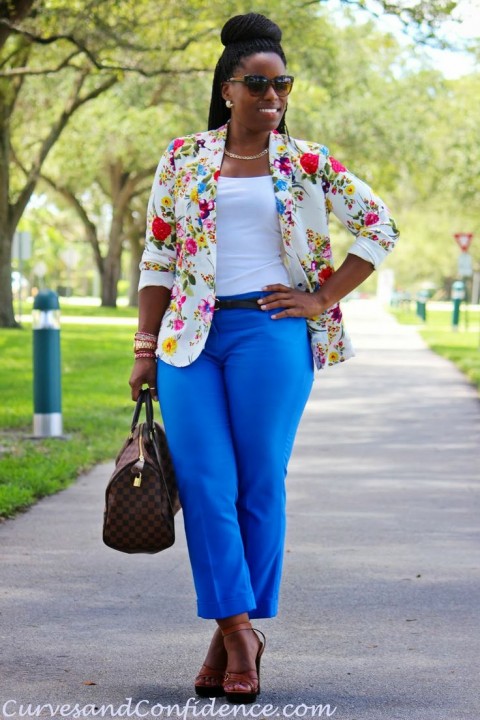
I’m sort of leaning toward an updated khaki for my first pair. Robert Kaufman makes this really interesting tropical bi-stretch fabric I want to try. (The color is less red in real life.) And I might tackle denim later. What do you think: neutrals or color for your trousers?
The top I designed for the new Lisette B6183 pattern is a grown-up T-shirt. It’s made for wovens and is more fitted than a basic T which makes it flattering instead of floppy. It works well both worn alone and as a layering piece, so if you wear a suit to work it will be a great basic under jackets and worn with accessories. But it also looks great worn by itself with skirts, trousers, and even jeans. You’re sure to get a lot of wear out of it.

This pattern has princess seams, which are so helpful for getting a good fit. And I already mentioned that the pattern comes in multiple cup sizes, so the first step in getting a good fit has already been done for you.
Ready for a few fabric and styling ideas? This style was a lot of fun to research for you!
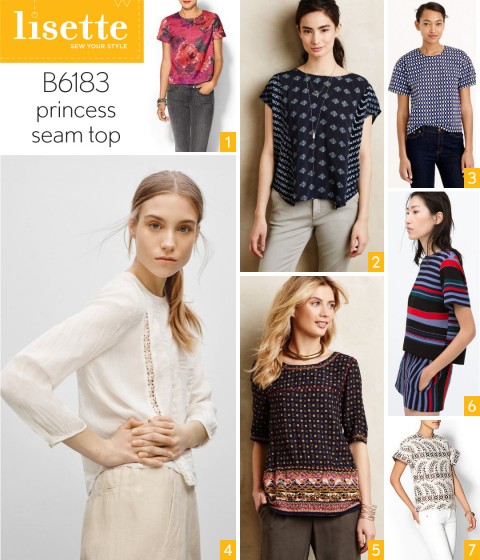
- Isn’t this floral print pretty? Pick a dressy floral with your favorite colors and you’ll be surprised how often you can wear this.
- The shape of this top is quite different from the top in the pattern, but I included it because I like the color blocking with two different prints. As long as the prints are a similar color palette and different scales this can be a really fun way to play with two prints you like. If you want to achieve a slimmer silhouette you might try using darker side panels, which can give the illusion of a narrow waist.
- Try a geometric print or an interesting jacquard for a fancy version of the top.
- Princess seams are a great place to try insertion lace, which is an heirloom technique that’s incredibly easy to sew.
- Try an Indian block print for a boho look!
- An awning stripe will give a really contemporary look that would be fun for spring or summer.
- Look for pretty, simple prints like this one.
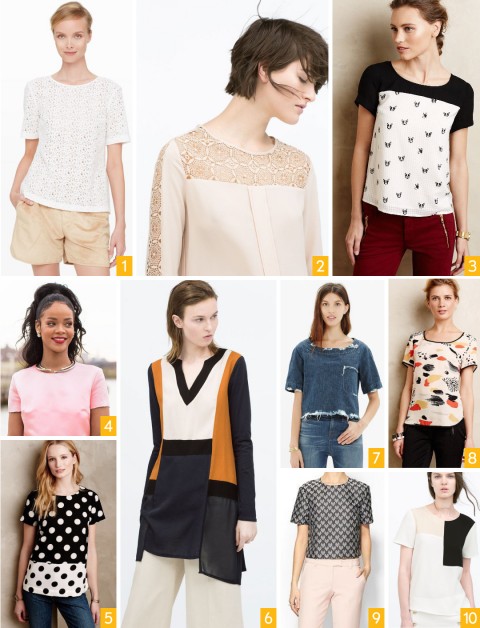
- Lace, of course. Don’t miss this version or this version in the Lisette Pinterest board either.
- Or just a lace yoke? Since the yoke on this pattern is lined, you could use a skin-toned color for the lining or a matching solid if you prefer/
- Color blocking the yoke and sleeves for a sporty look. Here’s another contrast yoke you might like.
- Pink sateen for fancy.
- Reverse polka dots would be a fun way to color block this pattern! Again, do the yoke and sleeves for a really cute top.
- Speaking of color blocking, go all the way with three bold solid colors if you really want to have fun with this style. Black yoke and sleeves, mustard side panels, cream center front and center back panels. and maybe a black band at the hem, just for fun?
- This style doesn’t have to be fancy. Denim or chambray would make a great casual style, and I love the raw edges for a tough look. If you’re not a fan of raw edges, try flat-felled seams.
- A pretty abstract print.
- Neutral jacquard. Or use a tie silk for a really fancy and colorful top! And if you’re really feeling adventurous, look for a fabric with a lot of texture, like this one.
- Neutral color blocking. Very sophisticated and versatile. You could cut the yoke in half for a similar look.
I couldn’t leave without featuring a few more versions I love.
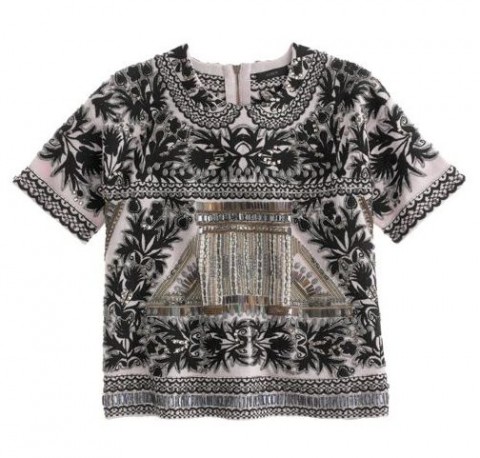
This crazy-fancy embellished wool version is just so pretty. You might be inspired by some of these over-the-top details to try embellishing in a smaller way yourself. A little trim on the sleeves, perhaps? A fancy embellished collar, either applied or simply embroidered? Maybe some beading along the edge of the yoke? And if you have an embroidery machine, certainly an embroidered yoke!
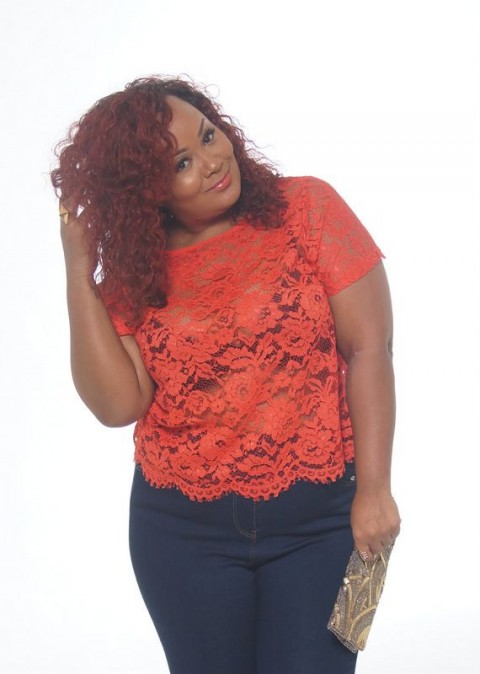
This silhouette works great on curvy bodies, too! The trick is the proportions. The semi-cropped hem prevents it from overpowering or feeling oversized. (And yes, you might prefer to underline the lace. I think that would be a good idea.)
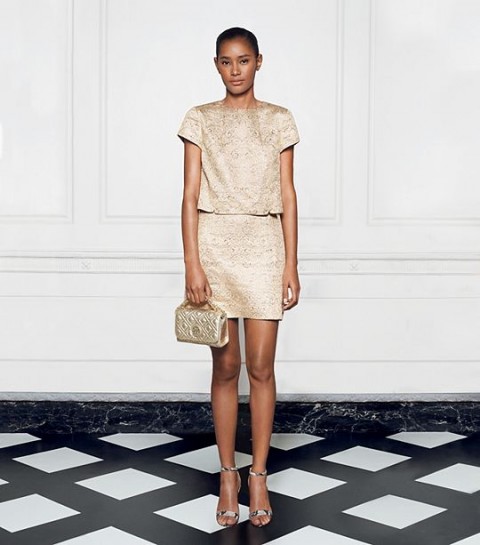
See what I mean about being a great style for fancy? This is actually a dress, but I prefer it as two separates. And we have a great Liesl + Co. skirt pattern coming out soon that would be perfect with this top to create a similar style. Stay tuned!
As always, there are many more ideas on my Lisette board if you need more inspiration. I’ll show you the fabrics I’ve selected for this top soon. Who wants a sew-along for this style?
Are you ready to start sewing for yourself? I think it’s time to set some dates for some sew-alongs! Here are the dates I’m proposing, to get us started.
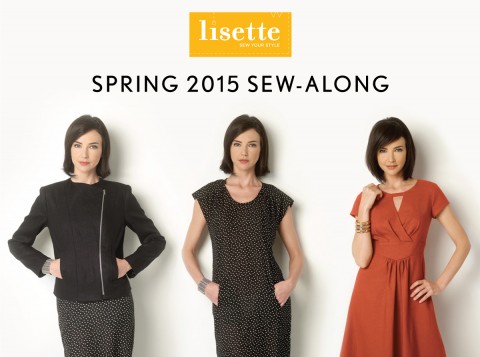
- Moto jacket, B6169: March 23-27
- Fit-and-flare dress, B6168: April 6-10
- Loose-fitting dress: B6169: April 20-24
And we can carry on from there if you want to sew more styles together. Sound good?
Butterick knows how to pick a pattern for their catalog cover, don’t they? The new Lisette B6168 dress is clearly your favorite from the latest Lisette collection. And with good reason. It’s a versatile dress that can be sewn for everyday wear as well as for fancy occasions. And of course it has that figure-flattering fit-and-flare silhouette, which is always a popular choice for virtually any body shape and size. I’m excited to sew this dress, too, and I have the perfect fabric for it!
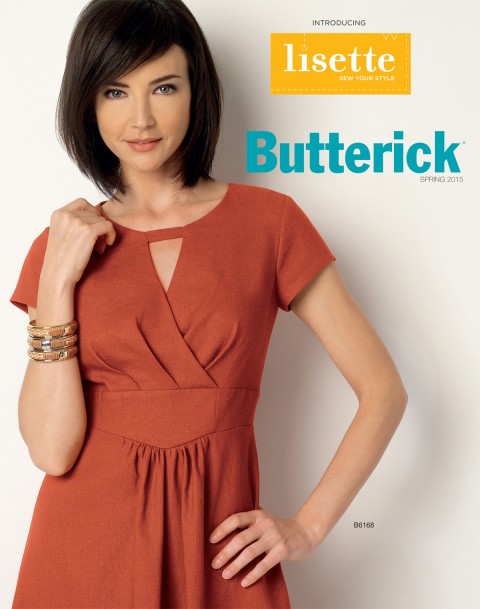
I promised a sew-along for this style, and we’ll announce the sew-along schedule for the new patterns soon. I also promise that I’ll cover full bust and small bust adjustments for this style since so many of you have expressed concern about getting a good fit. (Don’t worry. It’s really easy.)
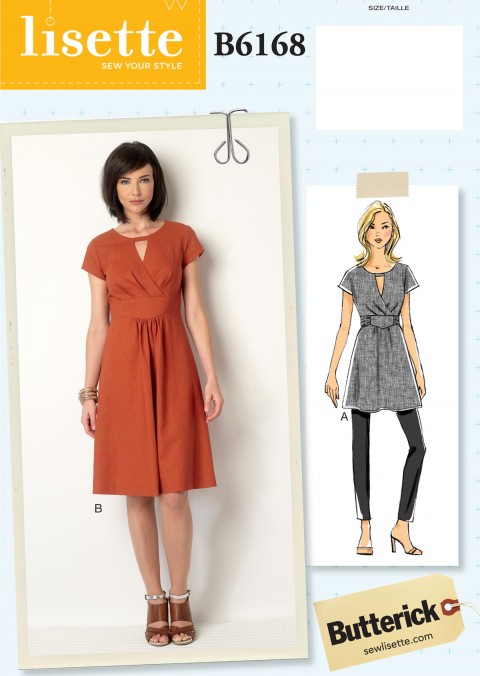
Now, what fabrics and styling choices would work for this pattern? Here are a few suggestions from my Lisette Pinterest board.
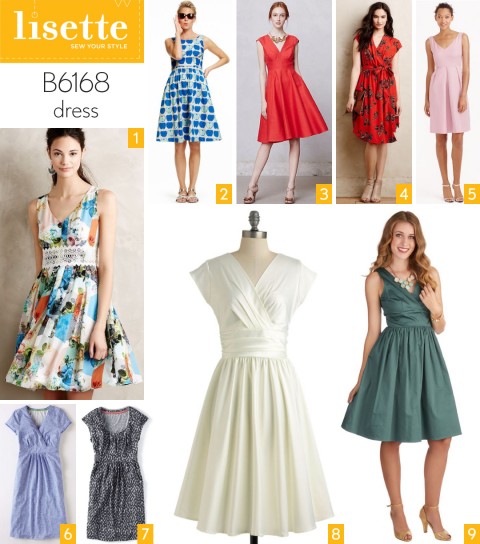
- This print is an interesting combination of vintage and contemporary. It works well with this style, I think. And by the way, it would be easy to add fullness to this skirt if you’re so inclined.
- If you can’t pass up those cute printed cottons, don’t worry because they’ll work great for this style. Summer sundress, anyone?
- Red silk dupioni. The nubby texture keeps the dress interesting and the sheen of the silk give it a little glam sparkle for that special occasion.
- Ignore the messy draping on this dress. I’m loving the red print, which would work so nicely for this pattern.
- Pink faille. Wedding party. Or even casual bride. In the right color, this dress could easily transition to date-night dress without blinking an eye. And in black faille it could be the most elegant little black dress ever.
- When I saw this photo from a distance I got all excited because I thought the fabric was a men’s cotton shirting. It’s not, but we can pretend, right? (The polka dots in this photo are cute, too–don’t get me wrong. I just wanted a nice yarn-dye check, which would be so elegant for summer.)
- Don’t be afraid to try this dress in printed cottons. Sateen, lightweight canvas, and even quilting cottons will work if you’re looking for an everyday dress. Throw on a cardigan or a short blazer for instant layering style.
- In white or creme-colored silk. Very pretty and fancy!
- I don’t know what happened to the fit of this dress, but if you can look past it to the color, fabric, and styling you may find some inspiration. The gold sandals are a nice touch, aren’t they? I love this shade of green, and the styling would be great for a wedding.
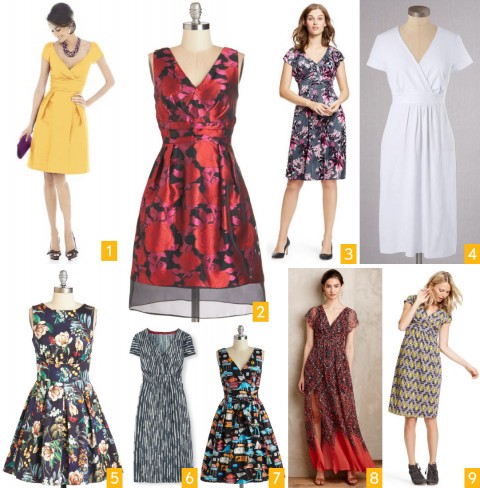
- Another dressy version, this time in a pretty yellow. Yellow is having a big fashion moment right now, have you noticed? In general I prefer to wear it as more of an accent color, but for a dressy dress, it’s really very pretty!
- If you find just the right special-occasion sateen floral you can sew something magical like this dress, which has a little mystery and lots of elegance. Again, wedding, date night, party dress, this dress can be worn for lots of fancy occasions.
- A pretty neutral-ground floral can result in a versatile dress. Wear it with bright or rich-colored solids for a variety of looks. A plum- or navy-colored velvet jacket would be an interesting texture addition to an outfit, wouldn’t it? I think it would be fun for spring.
- White cotton. Summer. Perfect together.
- This print reminds me of a still-life painting I fell in love with in our Madrid hotel last summer. Digital prints can include a photographic level of detail, and I’m starting to see them in the fabric stores every once in a while these days. (This dress was a digital print.)
- This abstract indigo print could be worn all spring and summer so easily, couldn’t it? Use accessories to change up the style from day to day and it will be extremely versatile.
- Proof that even a crazy conversational print can work for a dress pattern like this. Be fearless, my friends!
- This boho-inspired dress could be inspiration for a maxi-dress version of the pattern if you’re so inclined.
- If you can’t pass up a fun cotton print, here’s your chance to wear it yourself!
There are additional images on my Lisette board if you want even more ideas.
Now, one last photo before I go. A few of you were unhappy with me last week for not showing more diverse body types in these photo mosaics, especially when I claim that these styles will work well in a variety of sizes and proportions. I promise that I do look for different images when I’m writing these posts, but I’m sure you understand that most fashion photos feature only one type of person–very slim, very young, very white models. A project I have in the works will help in this regard, so I ask for your patience. But I do like this photo, which I just came across and which shows a similar silhouette to B6168.
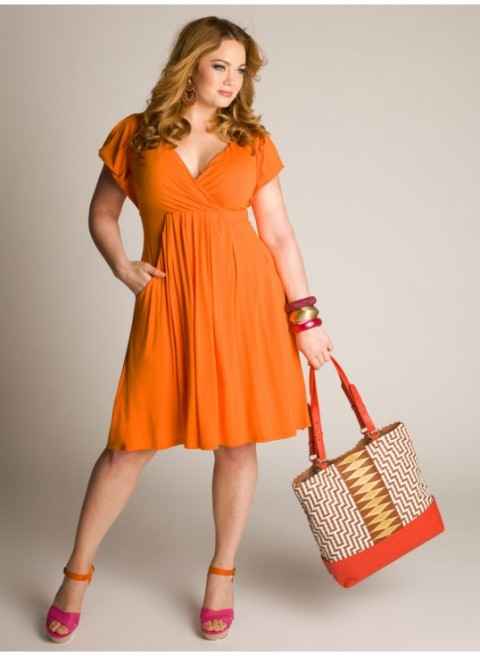
And the dress is even orange, so it looks especially similar to the original dress photo! (Cute shoes, too, right?)
Stay tuned for the sew-along. And in the meantime, which fabrics are you considering? I’ll show you my choice soon.
← Older posts Newer posts →


